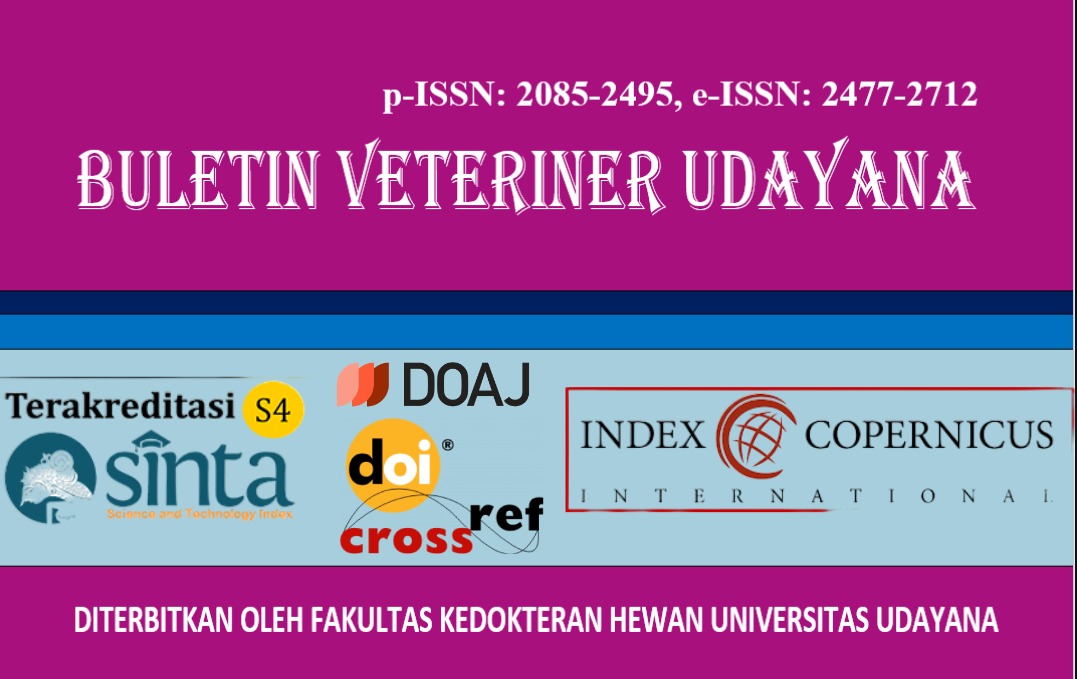HISTOLOGIC FEATURES OF GRANULOCYTE WHITE BLOOD CELLS AND PLATELET DISTRIBUTION WIDTH VALUES IN DOGS WITH DERMATITIS
DOI:
https://doi.org/10.24843/bulvet.2025.v17.i03.p35Keywords:
Dog, Dermatitis, Neutrophil, Eosinophil, Basophil, Necrosis, Platelet Distribution Width (PDW).Abstract
Dermatitis in dogs is an inflammation of the skin caused by parasites, bacteria, fungi and metabolic disorders, with severity varying from mild to severe. This condition triggers inflammation that affects granulocyte leukocytes, namely neutrophils, eosinophils and basophils, which can undergo necrosis. Necrosis is characterized by changes in nuclear morphology, such as pycnosis, karyorexis, and karyolysis due to irreversible cell injury. In addition, Platelet Distribution Width (PDW) values reflect variations in platelet size and are often associated with inflammatory activity. This study analyzed the histological features and differences in necrotizing leukocyte counts and PDW values in dogs with mild and severe dermatitis. The results showed that necrotizing neutrophils in mild dermatitis (4.9 ± 5.2) were lower than those in severe dermatitis (5.4 ± 3.3), but the results of the independent t-test showed that the difference was not significant (P > 0.05). The opposite situation in eosinophils and basophils, where eosinophils that experienced necrosis in mild dermatitis (2.5 ± 11) were higher than those in severe dermatitis (0 ± 0), while basophils that experienced necrosis were higher in mild dermatitis (9.6 ± 17) than in severe dermatitis (0 ± 0), but the results of the independent t-test showed that the difference was significant (P < 0.05). The PDW value in mild dermatitis (15 ± 2.4) was greater than that in severe dermatitis (14.5 ± 2), but not significantly different (P > 0.05), it can be concluded that the severity of dermatitis does not affect platelet size. Further research needs to be done on health status by looking at other indicators such as the presence of lymphocytes and monocytes in dogs with mild derrmatitis and severe dermatitis.




